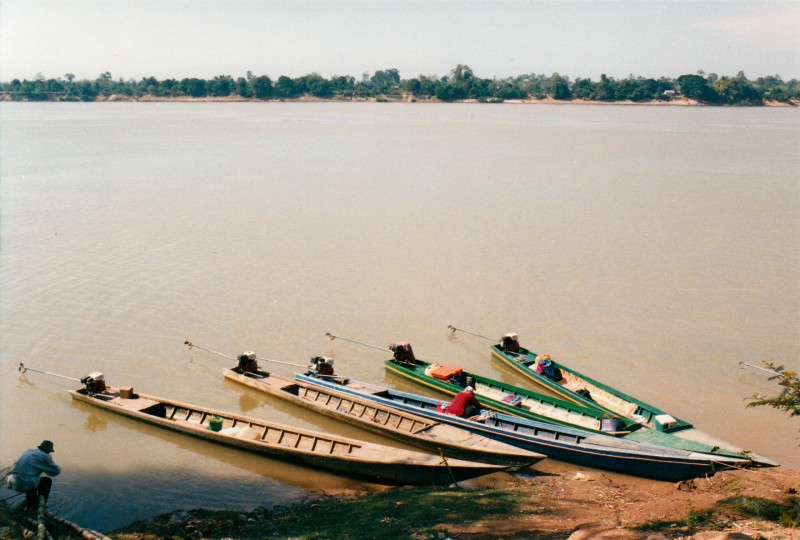[In January 2003 I accompanied an expedition that was conducting a survey of river dolphins on a stretch of the Mekong River in Cambodia. The expedition was led by Isabel Beasley, who was then a PhD student specializing on Orcaella brevirostris: also known as the ‘Irrawaddy Dolphin’ this species is found in many Asian river systems and deltas. The journal I kept during the expedition will appear on this site as a continuous series of posts. This is part 25 of the series.]
Once we start moving there is no doubt at all that Isabel is in charge – completely in charge. She’s absolutely the captain of her crew and quite a demanding taskmaster. She knows exactly what she wants, but she goes about getting it in a very quiet, good-natured way. She’s always smiling, always friendly (but never too friendly – there’s a finely-judged distance between her and the crew). At the same time she’s very firm and makes absolutely sure that everything is done exactly as she wants it. I was very impressed by her effectiveness in getting her team to work for her: they seemed to go beyond the call of duty in doing what she wants.
The work of surveying is exactly like factory work, a precisely defined synchronization of time and motion. The succession of observers moves through the boat much like a production line; the data produced at the end is the final product, and every slice of time produces perforce a certain amount of data. This being so, you’d expect a certain amount of resistance; you’d expect the people on the line to try and find a few shortcuts. But they don’t seem to. For instance, while on binocular watch some of the observers take care to stand, even though this is quite strenuous. Nor did it seem to me that they were trying to cut any corners, even though the days are very long – extending from 6 a.m. to 7 p.m. in many cases. But Isabel isn’t entirely happy with their effort I think – I suspect she thinks they could try harder to spot dolphins. But of course the odd thing is that the way a survey like this is designed it doesn’t matter whether an observer tries or not; what matters is that they go through the motions. It’s all data either way.



Thanks for the Mekong Journals.
Got me thinking about women ecologists in India and I have started a conversation series with them.
Here is the first — A Cricket Lady for Scientific American.
http://blogs.scientificamerican.com/guest-blog/2013/09/16/conversation-with-a-field-biologist-in-india/